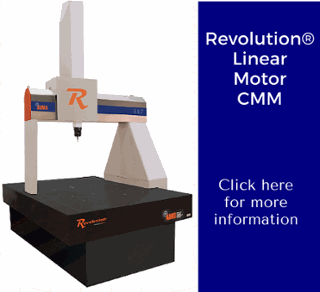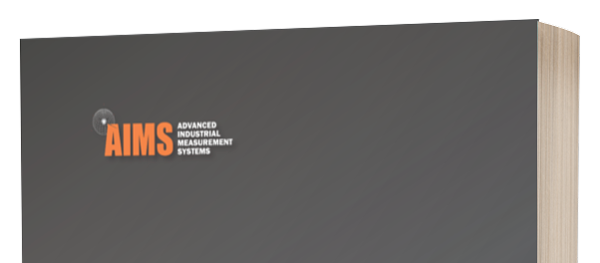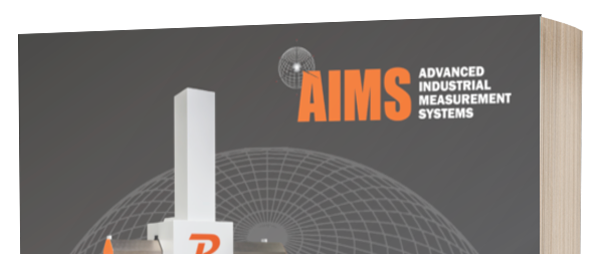
"Count the cost" is a phrase that's hung over most of us at one time or another like an ominous cloud. As a kid you may have heard something like it when you pleaded for a puppy or made a case for your first car. The Cambridge and MacMillan Dictionaries define the idiom as the first step to “defining how badly something has affected you.” Author Daniel Defoe's protagonist Robinson Crusoe learned the value of these words after he disregarded his father’s advice, went to sea, met with disaster and was marooned on an island for four and a half years. “Now I saw, though too late, the folly of beginning a work before we count the cost, and before we judge rightly of our own strength to go through with it,” he writes.
Defoe may have penned those words in 1719 but many manufacturers today are wishing they had “counted the cost and judged their strength” before making certain equipment purchases. When it comes to purchasing the right CMM, counting costs is crucial. But more often than not, it's woefully missing from the procurement process simply because most manufacturers aren’t looking past the initial purchase price. Based on years of experience and some difficult lessons learned, I can tell you that if your goal is to find the machine with the cheapest price tag, you will spend the most money. Here are some of the ways a cheap CMM can cost you big.
1. We all know that inspection is a costly business. If your measurement process isn't repeatable, you have to pull larger sample sizes to achieve the same degree of confidence. Sampling criteria is based on CPK and PPK indexes for standard statistical calculation. If your process changes the input number you're plugging into your CMM, it will yield smaller CPK. This forces you to inspect a larger number of parts, inflating your cost per parts. ISO standards include uncertainty calculations because the governing body recognizes there is a small degree of variability in everything that is used to calculate statistical process control.
We have some pretty smart customers who hold our feet to the fire by asking us to measure the same part 10 times before they invest in one of our CMMs. They're floored by the repeatability of our inspection process. These are the same customers who have invested in CMMs from other OEMs which means when we test a part, we're going to bat against some very high end machines – a contest we’ve won hands down every time. We’ve also beaten these other brands on purchase price and throughput. For CMMs we’ve supplied with our REVO Probe, we’ve seen throughput increase by 1000 percent. If you can install one CMM to perform the work of 10 to 100 CMMs, you're looking at significant operations savings.
Here's an example. One of our customers can’t wait to start checking parts with our REVO-equipped CMM because their customers are beating them up on delivery delays. Inspection has been a big bottleneck for them. Initial tests demonstrated that our REVO-equipped CMM dropped their inspection time from 20 hours to just 2.5. Now they're looking at retrofitting their other CMMs.
2. Calculating repair costs must factor into any purchase decision. That means lifting the hood and inspecting whether or not a machine is robust enough to take a hit. If you bang up a CMM, I don’t know of any company that can get a service rep to your facility that same day. We can because we made the commitment to service our customers early on.
3. Downtime is another aspect manufacturers often fail to think about. Let’s say that your value stream includes 30 production machines and you have one CMM performing inspection on parts coming off those machines. If your CMM goes down, you’ve got 30 machines sitting idle. Milling and grinding costs roughly $300 an hour. If you do the math it doesn’t take long for idle machines to translate into substantial profit loss. Especially since most OEM response time for repair and service issues is at least four weeks or more.
4. Software workarounds can be another problem. If you're finding that your software is lacking in functionality, you must develop programming that recreates the function your software doesn’t have. Those hours can add up quickly in terms of cost, as you may have to hire a programmer. You may also find that new programming won’t solve your problem. Any way you look at it, we’re talking about lots of dollar signs. Most manufacturers think "software is software" and that all packages basically do the same thing. I can tell you from experience that simply isn’t true. MODUS software is one package that has the flexibility and capability to carry manufacturers through the challenges of producing diverse parts.
5. When it comes to consumables most manufacturers don’t think about the cost or how it will impact parts availability. Are the parts you may need easily procurable? Can you get them for a reasonable price? These questions are especially important if you run a lights out operation. Another hidden cost is air. Air bearing CMMs are costly. Our HB shop floor series machines don't use compressed air.
The bottom line is that when it comes to buying a CMM you can treat it like a red-headed stepchild or you can take a Six Sigma approach and ask, "What kind of data do I want to collect from my CMM?" Your answer should be, "I want to collect all the data I can from my CMM so I can identify problems in my manufacturing processes and fix them." That approach will help you make a part that meets customer requirements and breaks the chains holding you to 100 percent inspection. In order to raise your profits and reduce inspection time, you need a CMM machine that can help you produce parts that are reliable and repeatable. It’s really that simple.


